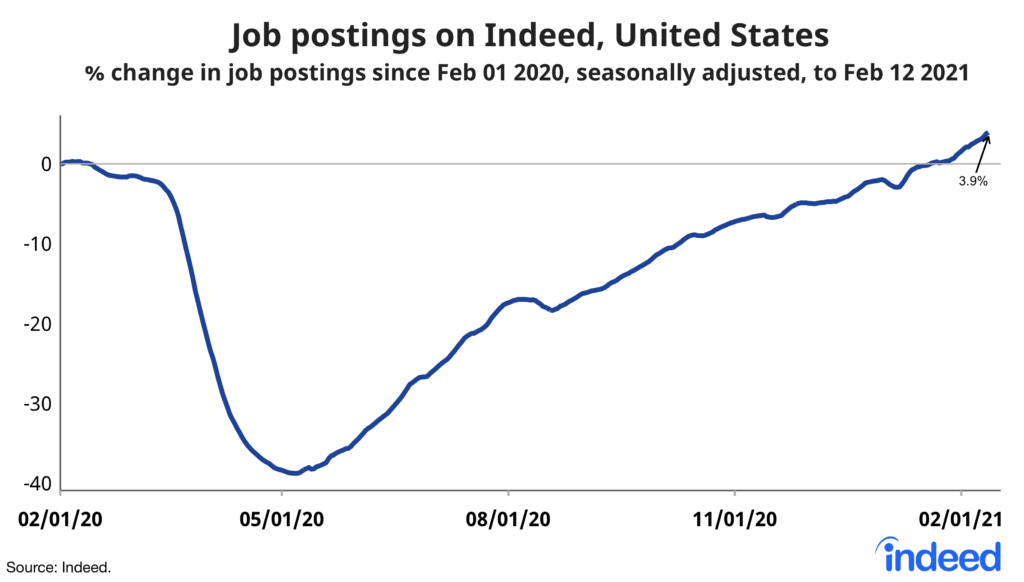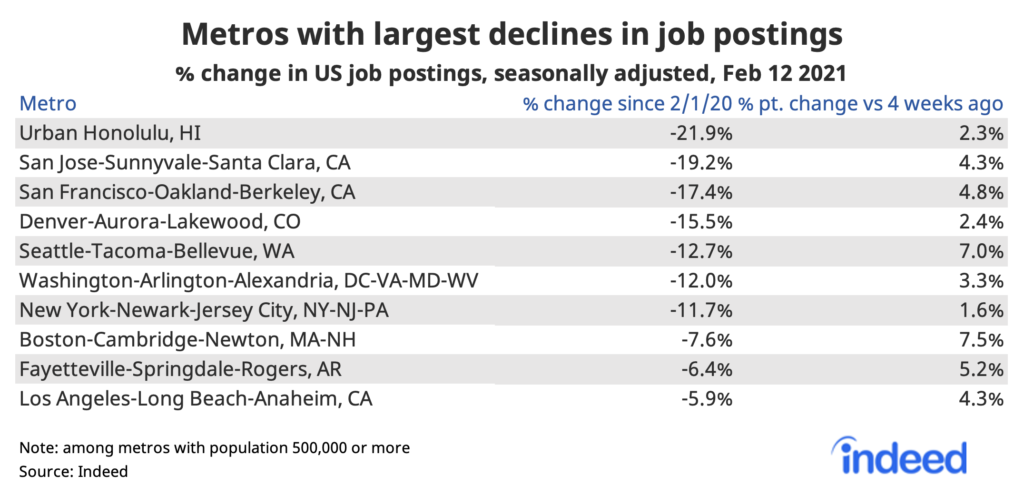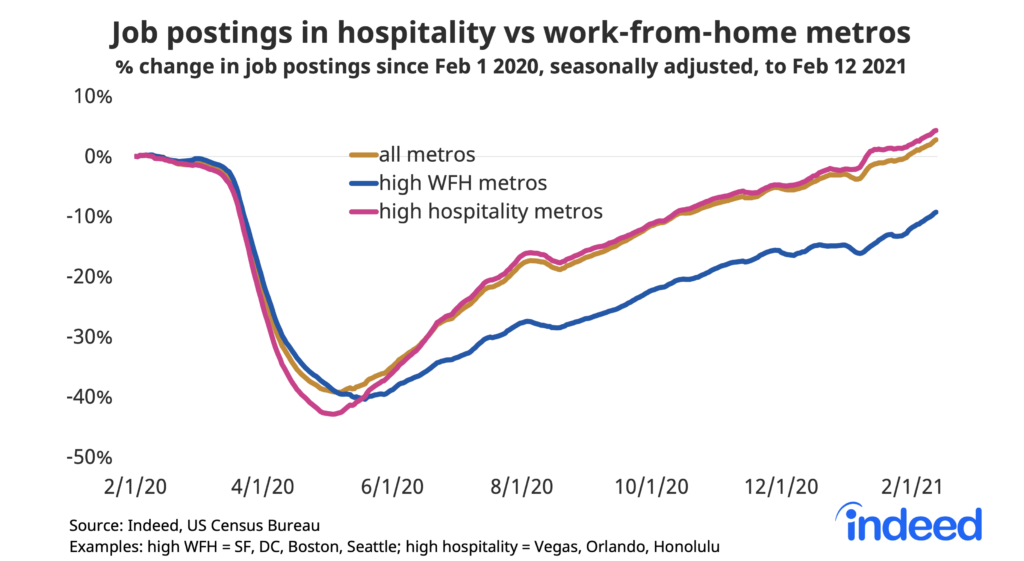We regularly update this report to track the pandemic’s effects on the labor market. Our methodology changed at the start of 2021, as explained in the methodology note at the end of the post.
Job postings on Indeed are a real-time measure of labor market activity. On February 12, 2021, they were 3.9% above February 1, 2020, the pre-pandemic baseline, after adjusting for seasonal variation. That’s a solid gain from a week earlier, when postings were 2.4% above the baseline.

Job postings plunged from mid-March to early May 2020 to a low of 39% below the February 1, 2020, baseline. Postings rebounded in May, June, and July by an average of 1.6 percentage points per week. Starting in August, improvement slowed to an average of 0.8 percentage points per week. But in the past two weeks, the index improved an average of 1.6 percentage points per week — the same rate as last summer.
Returning to the February 1, 2020, baseline does not mean the labor market has fully recovered. From February 1, 2019, to February 1, 2020, US job postings increased 9%, so returning to the baseline represents slower growth than before the pandemic. Moreover, other measures of labor market health, like payroll employment and the headline unemployment rate, remain substantially worse than pre-pandemic. For employment to recover completely, job postings will have to remain above the pre-pandemic baseline for an extended time. Finally, in some sectors and metros, job postings are far below the pre-pandemic baseline.
Big rebound in health-care jobs, but hospitality lags
Job postings have fallen most in occupations directly affected by the coronavirus, such as hospitality & tourism, sports, and arts & entertainment. Hospitality & tourism postings are still 35% below the February 1, 2020, baseline. Two sectors affected by virus surges and shutdowns — food prep and beauty & wellness — also lag, though these could bounce back quickly as vaccinations continue and infections decline.
Pharmacy postings have increased substantially as vaccines roll out. Nursing and medical-technician jobs are also well above the pre-pandemic baseline. So are jobs in goods-related sectors like loading & stocking, construction, driving, and manufacturing.

Metros where job postings have declined most
Within the US, job postings are down most in metro Honolulu, San Jose, and San Francisco. But job postings have improved in nearly all regions of the country.

Job postings fell more initially in both large and small travel and tourism destinations, but have picked up since May in hospitality metros like Las Vegas, Miami, and Orlando. Job postings have rebounded more slowly in metros where a higher share of jobs can be done from home. In high work-from-home metros, postings in retail, restaurant, and personal-services jobs have suffered. Postings in these metros are still 9% below the pre-pandemic baseline.

The pandemic has been especially severe in bigger cities. But the good news is that job postings have increased in recent weeks in larger metros as well as smaller metros, and in high work-from-home metros as well.

We host the underlying chart data on Github as downloadable CSV files. Typically, it will be updated with the latest data one day after this blog post was published.
Methodology
All figures in this blog post are the percentage change in seasonally-adjusted job postings since February 1, 2020, using a seven-day trailing average. February 1, 2020, is our pre-pandemic baseline. We seasonally adjust each series based on historical patterns in 2017, 2018, and 2019. Each series, including the national trend, occupational sectors, and sub-national geographies, is seasonally adjusted separately. We adopted this new methodology in January 2021 and now use it to report all historical data. Historical numbers have been revised and may differ significantly from originally reported values.
The number of job postings on Indeed.com, whether related to paid or unpaid job solicitations, is not indicative of potential revenue or earnings of Indeed, which comprises a significant percentage of the HR Technology segment of its parent company, Recruit Holdings Co., Ltd. Job posting numbers are provided for information purposes only and should not be viewed as an indicator of performance of Indeed or Recruit. Please refer to the Recruit Holdings investor relations website and regulatory filings in Japan for more detailed information on revenue generation by Recruit’s HR Technology segment.






